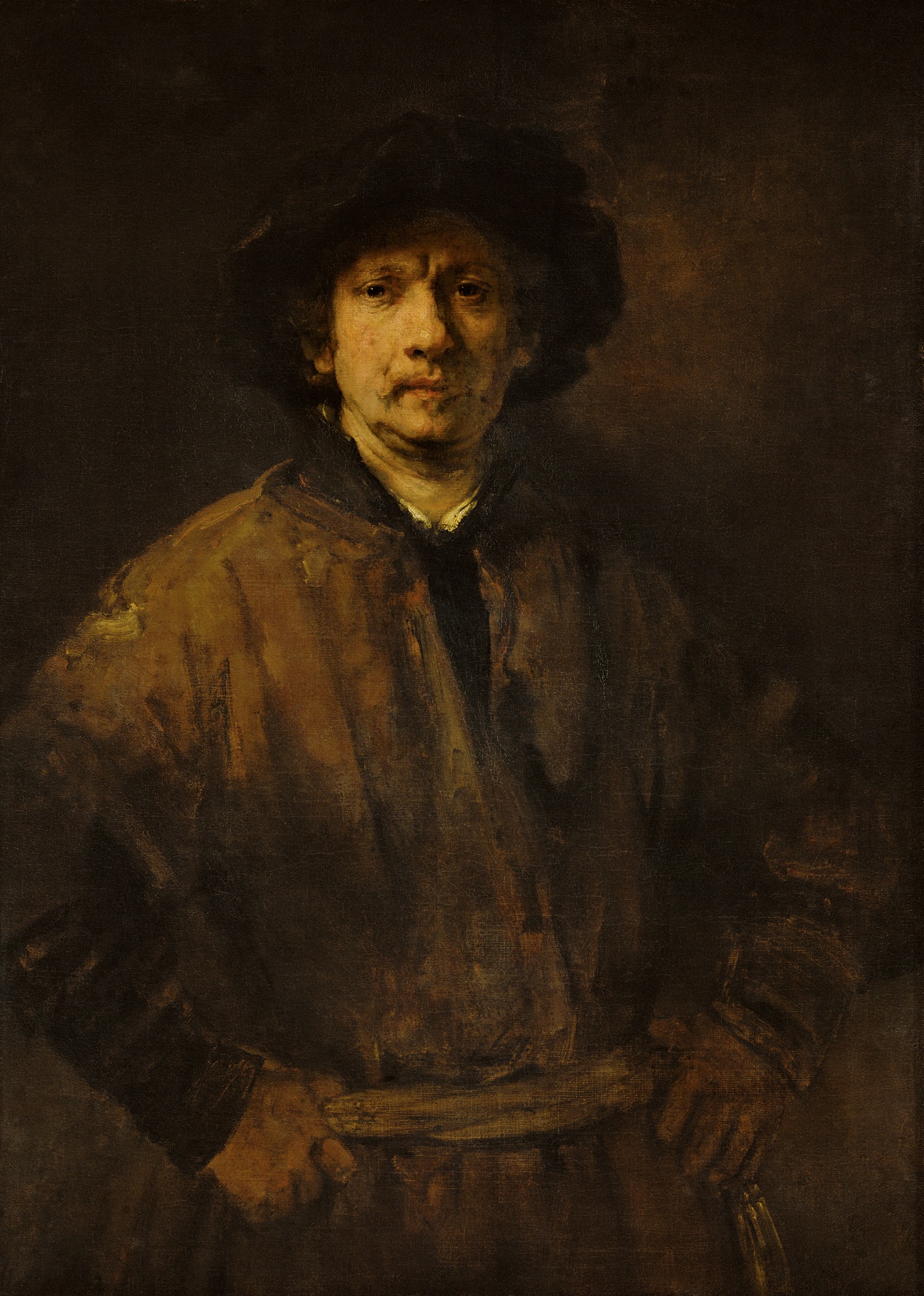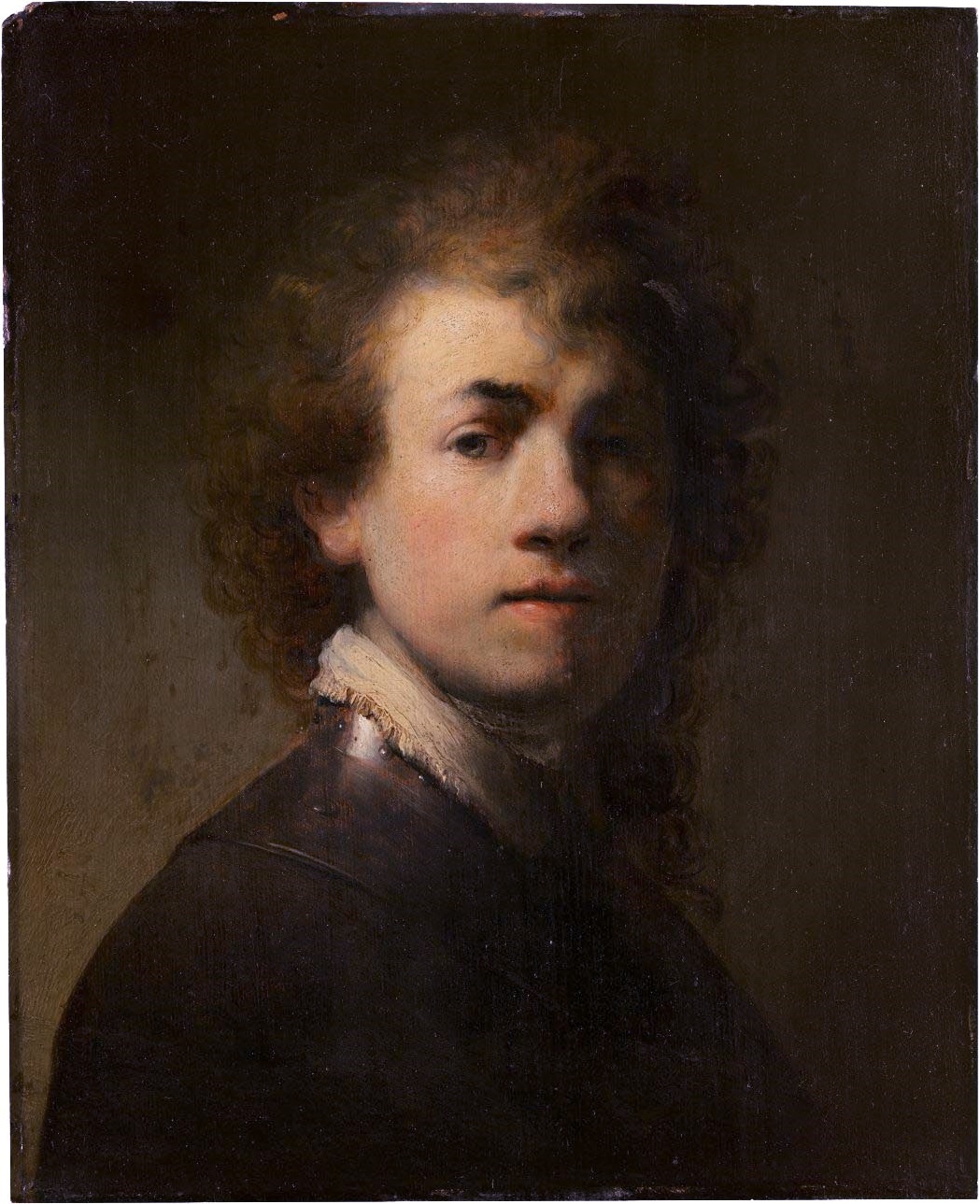Today's painting is a part of The Shape of Time exhibition at Kunsthistorisches Museum in Vienna. The exhibition challenges modern and contemporary art with the Old Masters. It explores the transcultural development of ideas and images over the centuries and reveals the enigmatic connections between influence, talent, and chance. You can read more about the exhibition and see some of the comparisons also on our DailyArtMagazine.com.
There is much evidence that Rembrandt’s series of almost forty reliably documented self-portraits (unique in the history of painting) served as more than merely a vehicle for the Amsterdam painter’s self-reflection. They were also a suitable means for him to present himself to the public; a form of self-marketing. The term self-portrait was not yet common in 17th-century Holland; such a painting was more likely to be referred to as “a portrait of Rembrandt painted by himself.” Thus, for the ambitious collector this painting was two things: Rembrandt’s image and, at the same time, an example of his art. Rembrandt has concentrated the meagre light on his face. His simple garment, trimmed only at the shoulders and collar, is gently illuminated and only hints at his stature. Entirely fixated on the ageing facial features, the viewer is initially distracted from the self-confident, almost challenging posture. The two thumbs hooked into a belt that seems to have been cursorily tied at the waist are a self-confident antithesis to the melancholy, complexly painted countenance. Rembrandt’s face is further emphasised by its contrast to other parts of the portrait with their uniformly thick application of paint, in general a characteristic of his late works. In contrast to earlier self-portraits in which the artist is often dressed in sumptuous fabrics, Rembrandt has chosen a simple garment; perhaps it is even the artist’s smock that he actually wore in his studio.


 Rembrandt van Rijn
Rembrandt van Rijn